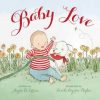Story Summary
A little old lady wakes up one morning and decides to make pancakes for breakfast, but finds it isn’t so easy. This nearly wordless book by Tomie DePaola has clever pictures with just the right amount of detail to keep the story moving.
Talk Before Reading
Wordless books create conversations–start the conversation by showing your child the cover with stacks and stacks of pancakes.
What do you think this lady likes to eat?
If your child is a fan of pancakes, ask how many he would eat. Encourage a guess about how many pancakes the little old lady has piled high!
This book is Pancakes for Breakfast. Let’s find out how this little old lady makes her breakfast.
Talk While Reading
Wordless books shouldn’t be rushed. Share this book when you have plenty of time to look at each picture and talk about what you see.
The story begins when the little old lady wakes up and decides to make pancakes. Each page is the next step—or next interruption–in her quest for pancakes.
Since there is a clear sequence to pancake-making, use plenty of transition words and phrases in your conversation, such as first, next, and then.
What do you think she should do next?
Talk to Learn Tip: The illustrator uses thought bubbles with pictures inside to tell readers what the little old lady is thinking. Explain this type of drawing, if he hasn’t seen it before in other books. Help him use these thought bubbles that look like puffy clouds to tell the story.
What is she thinking about in this picture?
The little old lady’s facial expressions help tell the story, too. Point out a change in expression and have your child describe the feeling. Stretch his vocabulary a bit by adding interesting words that go beyond “happy” or “sad.” The old lady might be contented instead of happy. Or disappointed instead of sad.
Oh, look how disappointed the little old lady is! She has no eggs! Oh, no!
This enterprising little old lady has a solution to meet every problem. Ask your child to guess what she will do next!
The author/illustrator tucks in a summary of the story on the last page with a picture on a wall of the little old lady’s house that says:
If at first
you don’t succeed
try, try, again.
Succeed and success are excellent words to add to any child’s vocabulary.
Talk Later
The thought bubbles in Pancakes for Breakfast give your child practice using his own words to say what the little old lady is thinking. In other books you read–with or without thought bubbles in the pictures–repeat the process of thinking about the character’s thoughts. Help your child notice the clues in the text and pictures to decide what a character–a person or animal–might have on his mind.
What do you think that cat is thinking, while she’s on the roof?
Talking about a character’s thoughts gives your young listener even more chances to use his growing language and build his own thinking at the same time.
Book
Pancakes for Breakfast by Tomie DePaola. Harcourt, Inc. 1978.
See also by Tomi DePaola: Charlie Needs a Cloak




